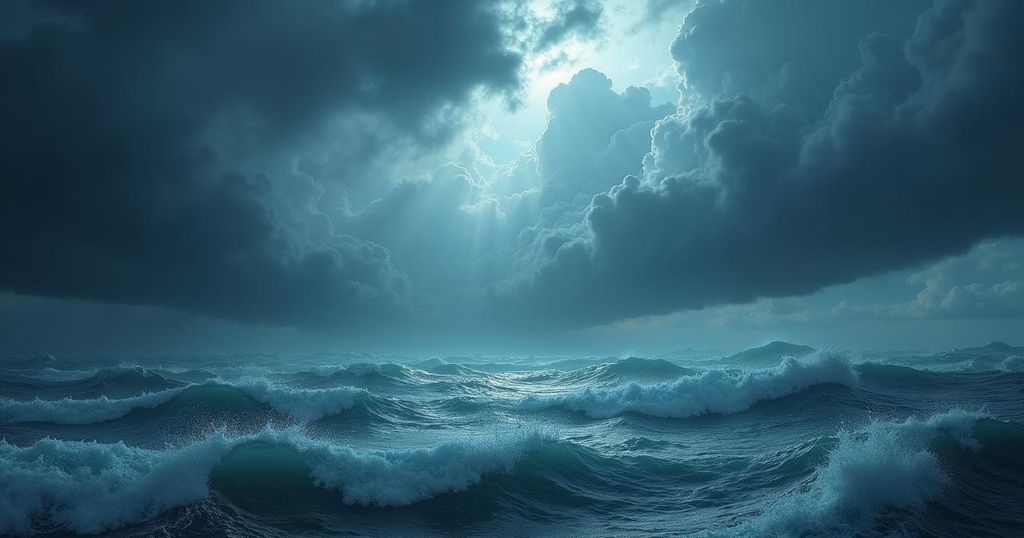Understanding Tropical Storms: Causes, Effects, and Impacts

Tropical storms are significant meteorological phenomena characterized by organized low pressure over warm oceans with sustained winds between 63 and 118 km/h. They serve as a transitional phase between tropical depressions and more severe cyclones, impacting various ocean basins worldwide. While causing less destruction than hurricanes, tropical storms can still lead to considerable rainfall and flooding, highlighting the need for monitoring and understanding their development.
A tropical storm is characterized as a well-defined system of low pressure that develops over warm tropical oceans. The maximum sustained surface winds associated with these storms range from 63 to 118 kilometers per hour (39 to 73 miles per hour). They are considered an intermediate stage between tropical depressions and the more severe tropical cyclones categorized as hurricanes, typhoons, or cyclones, depending on the geographical location. Such storms can form in any ocean basin favorable for tropical cyclones, including the North Atlantic, the northeastern and central Pacific, the northwest and southwest Pacific, and the Indian Ocean. In terms of size and structure, tropical storms exhibit similarities to mature tropical cyclones, possessing horizontal dimensions of approximately 160 kilometers (100 miles), with wind intensity typically peaking 30 to 50 kilometers (20 to 30 miles) away from the center. Notably, they lack the well-defined eyewall characteristic of more mature systems. In the Atlantic Ocean, the formation of tropical storms is often initiated by easterly waves propagating westward from Africa, characterized by winds of about 16 kilometers (10 miles) per hour and loosely organized convective clouds around a low-pressure area. If the atmospheric conditions are conducive, the system may organize and intensify as warm air rises, reducing surface pressure and increasing wind speeds, aided by the Coriolis force that induces rotation around the center. Similar mechanisms are observed in the western Pacific, where tropical storms often originate from convection within the monsoon trough, although the specific intensification processes are less thoroughly understood. When wind speeds in a tropical depression reach 63 kilometers per hour (39 miles per hour), the system receives a designation as a tropical storm. This classification remains until winds exceed 117 kilometers per hour (73 miles per hour), at which point the storm is categorized as a hurricane, typhoon, or cyclone. The Saffir-Simpson scale is applied to classify tropical cyclones in the Atlantic and eastern Pacific, ranging from category 1, with winds above 119 kilometers per hour (74 miles per hour), to category 5. Conversely, Australian forecasters utilize a scale where what constitutes a category 1 on their scale aligns with the tropical storm range of wind speeds. Tropical storms are more common than hurricanes as they serve as precursors to the latter. The average annual occurrences of tropical storms across various ocean basins are as follows: North Atlantic (13), northeastern Pacific (16), northwestern Pacific (27), northern Indian Ocean (5), southwestern Indian Ocean (10), and Australia (16). Roughly 45 percent of these storms escalate to hurricane strength. However, several factors can inhibit further intensification, including unfavorable environmental conditions such as low sea surface temperatures or high upper-level winds. Often, storms weaken upon making landfall before achieving hurricane status. While tropical storms do not typically generate the extensive damage associated with hurricanes, they can still cause significant impacts, particularly through prolonged rainfall or flash flooding in vulnerable regions. The storm surge tends to be minimal, usually under one meter (four feet), resulting in limited damage primarily to vegetation, trees, and light structures. Nevertheless, flooding risks remain serious in low-lying areas and hilly regions prone to flash flooding. In certain climates, rainfall from tropical storms plays a critical role in the hydrologic cycle, highlighting their importance beyond immediate storm impacts.
Understanding tropical storms is crucial due to their role in the global climate system and their potential impact on human activities and natural ecosystems. Tropical storms serve as a precursor to hurricanes, and recognizing their development can help in predicting severe weather events. These storms are a result of interactions between oceanic and atmospheric conditions, primarily over warmer waters, which contribute to their formation and intensification. The study of tropical storms and their impacts is becoming increasingly important as climate change alters weather patterns, potentially increasing the frequency and intensity of such storms in certain regions.
In conclusion, tropical storms represent an essential stage in the life cycle of tropical cyclones, characterized by sustained wind speeds of up to 118 kilometers per hour and forming over warm ocean waters. While they generally pose less risk than hurricanes, they can still cause significant damage, particularly through rainfall and flooding in susceptible areas. Understanding the mechanisms behind their formation and potential impacts is critical for effective preparedness and response to tropical storm events.
Original Source: www.britannica.com






